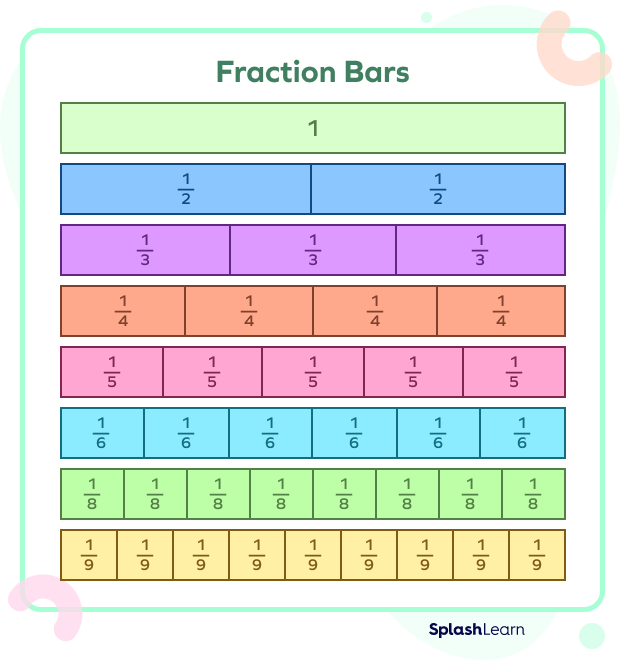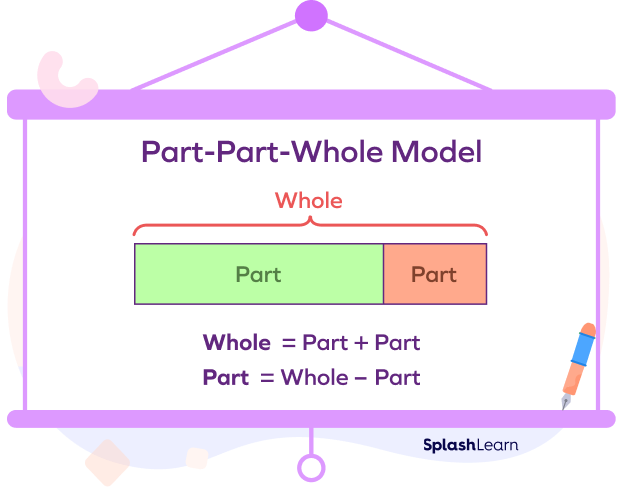Unlocking the Power of Bar Design Drawing Techniques for Effective Problem Fixing in Mathematics
Bar model attracting methods offer an one-of-a-kind aesthetic strategy to maths that can improve analytic abilities. By streamlining complex relationships and making abstract principles much more available, these designs act as powerful tools for learners. The effectiveness of bar models counts heavily on appropriate implementation. Comprehending the crucial concepts behind their usage can cause considerable improvements in mathematical understanding and interaction. The concern continues to be: just how can educators best incorporate these techniques into their mentor strategies?
Comprehending Bar Models: A Visual Method to Mathematics
Maths can usually seem difficult and abstract, bar designs give a visual approach that simplifies analytic and improves understanding. These designs utilize rectangle-shaped bars to represent connections and numbers, making mathematical concepts more tangible. By aesthetically segmenting quantities, bar versions enable trainees to better comprehend procedures such as enhancement, division, subtraction, and reproduction.
When confronted with word problems, trainees can draw bars to represent various elements, aiding in the visualization of partnerships in between numbers. This method not just assists in arranging information but also urges logical reasoning. For instance, in a problem including total amounts, bar designs can define parts and wholes, clarifying the required calculations. As students experiment bar models, they develop confidence in their mathematical abilities, enabling them to come close to intricate problems with an organized frame of mind - bar model drawing techniques. Consequently, bar versions function as an important device in the student's mathematical toolkit

The Benefits of Making Use Of Bar Versions in Issue Addressing
When it comes to trouble resolving in mathematics, bar models provide countless advantages. They provide a visual depiction of numerical partnerships, permitting pupils to conceive troubles better. By converting words into bars, learners can damage down intricate scenarios into convenient parts, consequently facilitating a clearer understanding of the problem available.
In addition, bar versions advertise essential thinking and analytical skills as students find out to manipulate the bars to locate options. This visual aid helps in recognizing patterns and relationships amongst numbers, making abstract principles much more tangible. In addition, bar models improve interaction in mathematics, allowing students to verbalize their assumed remedies and procedures plainly.

How to Develop Reliable Bar Models
Developing reliable bar versions requires an organized strategy that stresses clearness and precision. The very first step includes identifying the issue's key components, consisting of quantities and relationships. Next off, one ought to pick ideal systems for depiction, ensuring symmetry amongst the bars. This help in imagining the connections a lot more accurately.
After determining the quantities, the version ought to be drawn, clearly classifying each bar to reflect its corresponding worth. Utilizing different shades can boost understanding by distinguishing between numerous aspects in the problem. It is additionally vital to preserve constant spacing between bars, which aids stop complication.
Once the model is constructed, validating its precision through estimations strengthens its efficiency. Experimenting a range of problem types will improve proficiency in developing bar designs. Ultimately, a properly designed bar version not just streamlines complex problems however also helps with much deeper understanding and problem-solving skills in maths.
Bar Designs in Activity: Real-Life Instances
When put on real-life situations, bar models can efficiently highlight complex relationships and amounts, making them indispensable tools in different contexts. As an example, in budgeting, people can make use of bar models to visually compare income and expenditures, assisting in recognizing excess or deficit. In a grocery buying situation, a bar version can stand for the cost of various products, allowing consumers to rapidly analyze total spending and make informed choices.
In sports, coaches could employ bar models to analyze player stats, such as factors racked up over a season, assisting to determine efficiency fads. In addition, in project monitoring, bar versions can highlight job durations and resource allocations, facilitating clearer communication amongst employee. These examples show how bar versions transcend academic borders, giving quality in everyday decision-making and improving understanding of quantitative connections in different areas.
Integrating Bar Versions Into Classroom Knowing
Integrating bar versions right into class understanding can greatly enhance trainees' capacity to envision mathematical principles. This method not just aids specific understanding however additionally fosters collective discovering among peers. By interacting to address issues using bar designs, pupils can create much deeper insights and strengthen their mathematical skills.
Visualizing Mathematical Ideas
Bar versions serve as a powerful tool for imagining mathematical ideas in the class. By representing numbers and connections via bars, pupils obtain a more clear understanding of abstract concepts such as addition, division, you can try this out reproduction, and reduction. This aesthetic help simplifies complex problems, allowing learners to damage them right into manageable parts. Teachers can efficiently demonstrate connections between amounts, making it much easier for trainees to realize principles like proportion, percentage, and portions. Bar versions also urge independent analytic, as trainees can control the aesthetic representation to find options. Integrating these designs right into lessons not only improves trainee engagement but likewise sustains different learning designs, guaranteeing that all students can access and comprehend mathematical material better.
Encouraging Collaborative Learning
Collaborative understanding can be noticeably improved with the use of bar designs in the class. By integrating these aesthetic tools, teachers can foster an atmosphere where trainees take part in group analytic, leveraging each other's staminas. Bar models assist in conversations, allowing learners to articulate their assumed procedures and reasoning plainly. This graph motivates diverse techniques to deal with mathematical troubles, advertising deeper understanding. Students can contrast their versions, identify disparities, and collaboratively fine-tune their solutions (bar model drawing techniques). In addition, interacting with bar designs cultivates important abilities such as interaction, critical thinking, and team effort. In general, integrating bar versions into joint knowing not just reinforces mathematical understanding but also builds a supportive class culture where students learn from each other

Common Blunders to Prevent When Using Bar Versions
When pupils engage with bar versions, they typically come across specific mistakes that can prevent their understanding of mathematical ideas. One typical mistake is misstating the amounts involved. Pupils might draw bars of unequal Our site lengths to stand for equivalent worths, resulting in confusion. In addition, failing to identify the bars clearly can cause ambiguity concerning what each bar represents. Another constant mistake is ignoring the significance of scaling; students might fail to remember to preserve symmetry, influencing the interpretation of partnerships between numbers.
Moreover, some learners may hurry via the analytic process, disregarding to examine the problem prior to drawing the model. This can bring about improperly organized bars that do not represent the trouble's demands. Trainees occasionally focus only on completing the version without showing on the remedy, missing the possibility to grow their understanding of the underlying mathematical concepts. Awareness of these errors can substantially boost the efficiency of bar version strategies.
Encouraging Essential Believing Via Bar Model Techniques
In addition, bar designs promote discussion and partnership amongst peers, as students share their solutions and interpretations. This exchange of ideas cultivates a critical state of mind, allowing students to analyze several strategies to a trouble. Inevitably, integrating bar design strategies in maths education and learning not just enhances analytic abilities however likewise supports the essential thinking abilities needed for scholastic success and real-world applications.
Frequently Asked Concerns
Can Prevent Versions Be Used for Advanced Mathematical Concepts?
Bar versions can certainly be utilized for advanced mathematical principles. They supply graph and streamline complicated troubles, assisting in comprehending connections and operations. This method enhances problem-solving abilities across various levels of mathematical effectiveness.
What Age Conveniences Most From Bar Design Techniques?
Kids aged 7 to 12 advantage most from bar model strategies. This age team frequently battles with abstract principles, and bar models offer aesthetic support, boosting their understanding and analytic capacities in mathematics.
Exist Digital Devices for Creating Bar Versions?
Yes, there are numerous digital devices readily available for producing bar models, including software like Google Drawings, Microsoft PowerPoint, and specialized educational apps created for imagining mathematical principles through bar modeling strategies effectively.
How Do Bar Models Contrast to Other Visual Aids?
Bar versions supply a clear, structured representation of mathematical partnerships, usually supplying advantages over various other visual aids by streamlining complicated issues (bar model drawing techniques). Unlike pie charts or charts, they boost understanding get redirected here with direct contrast and proportional representation
Can Bar Models Assist With Non-Mathematical Problem Addressing?
Bar models can assist with non-mathematical issue fixing by visually standing for partnerships and elements, simplifying complex scenarios. Their organized technique assists individuals analyze problems clearly, cultivating far better decision-making and strategic thinking in numerous contexts.
As pupils practice with bar models, they create confidence in their mathematical capacities, allowing them to approach complicated troubles with an organized way of thinking. In addition, bar versions advertise important reasoning and analytical abilities as pupils discover to control the bars to find options. Additionally, failing to identify the bars clearly can result in obscurity regarding what each bar indicates. Bar designs give a clear, organized depiction of mathematical partnerships, typically offering benefits over other aesthetic aids by streamlining intricate issues. Bar versions can help with non-mathematical trouble fixing by aesthetically standing for elements and connections, streamlining intricate circumstances.